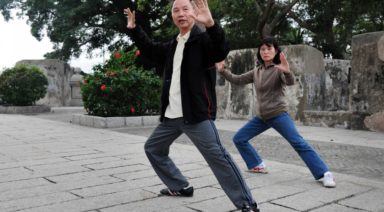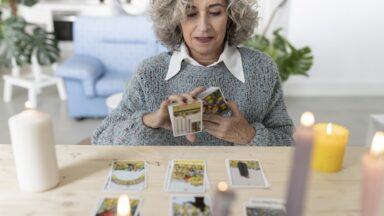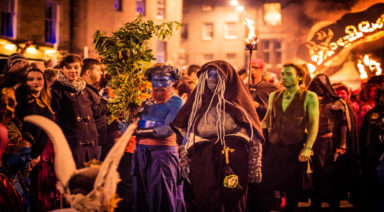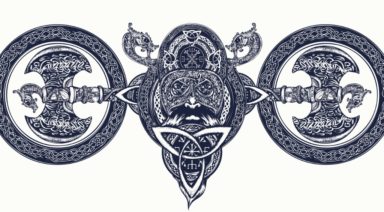Recharge Your Body with These 5 Mystic Rituals from Tibet
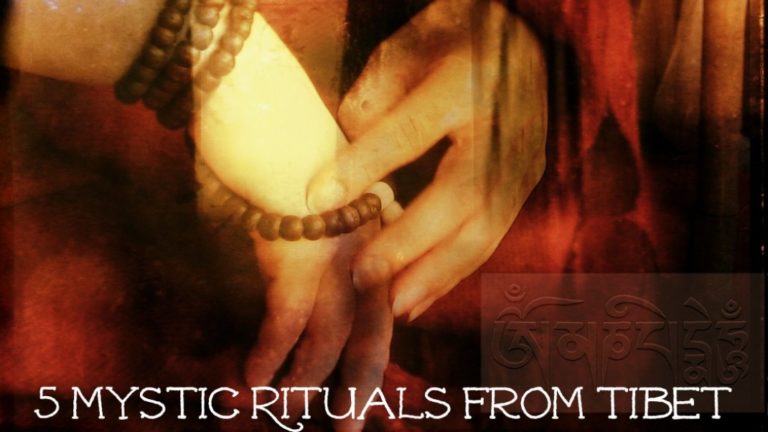
I have an interesting and somewhat mystic connection to this set of movements, the five Tibetan Rites. They have come to me repeatedly over many years from various sources, from a Shaman, the book gifted, and several articles, which have all ultimately allowed me to practice these Rites daily. In times of transition in my life when I was in need of a physical anchor these movements provided just that. They comprise a short, powerful yoga practice that, besides many physical and psychological benefits, also promises to keep us young. Bonus!
Designed by the Lamas of Tibet, the five Rites aid in the ignition of our Chakras, which translates to better overall health by restoring health and vitality to our body and mind. Along with the physical movements, the Rites teach us similar principles as the yamas and niyamas of Patanjali’s Yoga Sutras because they play an instrumental role in the foundational principles of a noble existence. If you are interested in following the yogic path, I could not encourage you more to read up on the Yoga Sutras and keep them as the core foundation for your life from which everything you do, say, think and live, and span out of. If you are going do it, do it Rite!
There is a crucially important sixth Rite, one that is not commonly talked about and ties in with the higher yogic practices laid out by Patanjali in the Eight Fold Path. More specifically, this sixth Rite correlates with the fifth of the yamas, which outlines the practice of strict celibacy as abstinence from sexual activity and the loss of sexual energy through orgasm. It is known in Sanskrit as brahmacharya, also known as one of four stages of life in the Vedas and Upanishads. As this is a stage in life which most of us have not yet reached, this article will stick to describing the physical movements.
As you become more familiar with the Rites a sense of inner wisdom about health and rejuvenation will become more apparent. At first, simply get to know the movements and let them flow naturally through you. Each Rite is supposed to be done twenty-one times, but I suggest to break them into three sets of seven reps. Or simply do what you can at any given time.
RITE No. 1
Designed for the express purpose of speeding up the Chakras.
Something that kids do naturally.
Stand straight with arms stretched out parallel to the earth. Lead with the left foot as you pivot on your right, turning clockwise until you get slightly dizzy. To lessen dizziness, find two focus points– Dristhi – one if front the other behind you. Focus on these two points and spin your head quickly to find them before your body does, like a dancer would. Do not forget to breath and engage your lower bandhas.
Rest in mountain pose, samasthiti or tadasana, with eyes closed in preparation for the next movement. Focus on your inner sensations.
RITE No. 2
Designed to further stimulate the Chakras and strengthen the abdominal muscles and core.
I call it a Roll-over, a name borrowed from Pilates, which perfectly outlines this movement safely. Come to lie on your back with arms stretched out beside you and your legs fully extended and engaged. Inhale to prepare, then exhale to bring your legs up overhead vertebrae by vertebrae, same way you go into plough, halasana. Do not let the knees bend. Hold, take another inhale, then exhale to roll back down the same way you came up, breath as you feel is necessary. Make sure not to hold your breath. With each repetition, establish a breathing rhythm. The more deeply you breathe, the better. This goes for all Rites.
Rest when you need and listen to your body. Hug your legs into the chest and rock side to side to sooth the back and pelvis. In preparation for the next Rite, relax in savasana and tune inward.
RITE No. 3
Should be practiced immediately following Rite 2.
Practice with the eyes closed.
Designed to mobilize the mid body, strengthen core as well as stimulate the solar plexus, heart, and throat Chakras.
This Rite is exactly what yogis would call camel pose, or ustrasana. Come onto your knees slightly more than shoulder width apart and your hands on your low back for support. Inhale to gently bring your hips forward as you lift the heart center upward. Tilt your head back as far as feels comfortable and exhale to return to upright.
Rest in child’s pose, balasana, when necessary as well as at the end of the set. Focus your attention on your breath as you breathe into your low back, hips and pelvis. Massage your third eye here in preparation for the next Rite.
RITE No. 4
Energetically works on same Chakras as Rite 3.
Strengthens arms, legs and gluteus.
I call this Rite “Table Top.” Come to sit with both feet on the floor shoulder width apart. Bring your hands just behind you and finger tips faced forwards. Inhale to bring your hips up as high as possible, either looking to your navel or tilting head back if comfortable. Exhale to come back down with control.
When necessary as well as when you’re done, rest in savasana or in supine with knees bend towards armpits, rocking side to side. Focus on the sensation of letting go and allow for your body to melt into mother earth as you transition to the last Rite.
RITE No. 5
Designed to stimulate all Chakras.
Strengthens the entire body.
Start in full high plank with your hands and feet shoulder and hip width apart. Check that your elbows and knees are not locked by keeping them micro-bent. Inhale to move into downward facing dog, or adho-mukha svanasana. Exhale to return to plank. As you get better, speed up the movement a little.
When you need a break, rest in balasana, child’s pose, then resume.
Upon completion, rest in savasana for as long as possible to let the body absorb the benefits of the practice. Bring your full attention to the breath.
Enjoy and drop me a line if you have any queries.
Namaskar.
“Work honestly, meditate everyday, meet people without fear, and play.”
- Baba Hari Dass
The Healing Power of Tai Chi and Bone Tapping

Tai Chi Chuan or any Tai Chi is a type of Kung Fu, so at some depth it’s a martial art, but it’s also more than that. It’s a healing art and a meditation in itself that can help one’s balance. It provides a tangible mind/body/spirit connection, as well as a deeper connection with one’s surroundings. It can do wonders for the ailed as well as athletes of all types. It’s also a folk dance (the only way I can fake the ability to dance is by repeating Tai Chi moves).
Tai Chi is a physical art that betters one’s well-being and it’s also a metaphysical art that provides a way to cultivate energy. Tai Chi is all about developing grounding and rooting. Since it is done standing and walking, the meditative nature of Tai Chi is highly applicable and transferable to the rest of our day as we walk and stand around others.
There are four main forms of Tai Chi: Chen, Sun, Yang, and Wu, and there are many different styles within each. No matter how different they are, each contains some of the same practices and entirely the same theories.
In Tai Chi, there is no one superior type of posturing, there are only more dedicated practitioners. The interesting thing about Tai Chi, as opposed to practically everything in the postmodern world, is as long as you keep in mind certain concepts you can’t do it wrong, you can only refine it. In this way, there is constant potential to learn more from the same movement.
In Tai Chi, a couple of movements are just variations of yoga’s warrior poses, only done with less of a deep stretch. And in the form I practice there are a couple of movements that involve brushing oneself, tapping certain body parts and even adding a moderate stomp. In Tai Chi, there is infinite variation and change is good.
Being flexible and accepting of new ways to do things and new forms to do is a big lesson. It’s said that in the long-form there is a variation of every movement possible and there is definitely a reflection of every martial art, healing and internal art.



